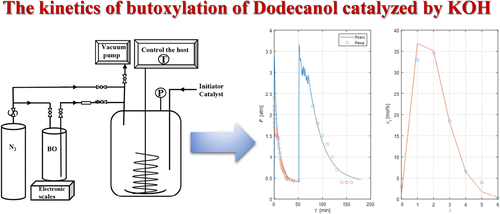Fengqin Li, Jingjie ZhouYuqi, LiuJinyuan, SunKe Zhang, Huibin Liang, Chunyu Wang, Tao Geng, Riccardo Tesser, Vincenzo Russo, Martino Serio
Ind. Eng. Chem. Res. 2025, 64, 13, 6897–6907
Abstract
The reaction of butylene oxide with fatty alcohols produces interesting products for the surfactant industry; however, no detailed study on the kinetics of this reaction can be found in the literature. In this paper, the kinetics of butoxylation of dodecanol catalyzed by KOH was deeply investigated. An orthogonal design approach was used to determine the optimum reaction conditions, which were analyzed in conjunction with the residues of fatty alcohols and epoxidized butanes by using a combined metric analysis. On this basis, BO solubility was measured and finally compared with the UNIFAC model, and it was found that the kinetics of epoxidized butane was modeled in the same way as the ethoxylation and propoxylation of primary fatty alcohols. It is concluded that the alkoxylation reaction rate decreases mainly with the increase in the steric hindrance of the employed epoxide. Finally, the models and data in this paper can be used for industrial reactor design and production optimization.

